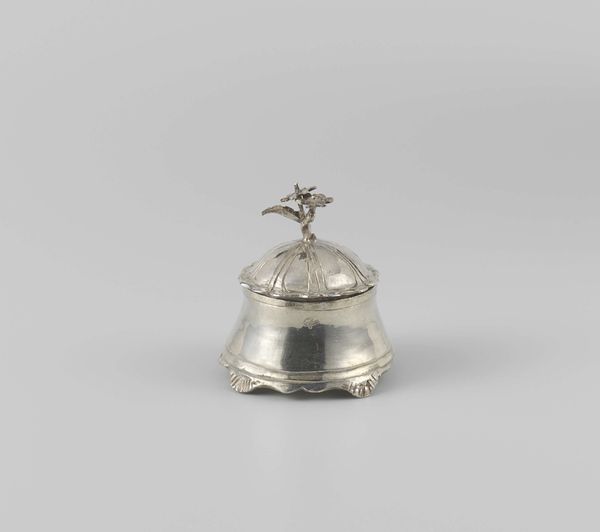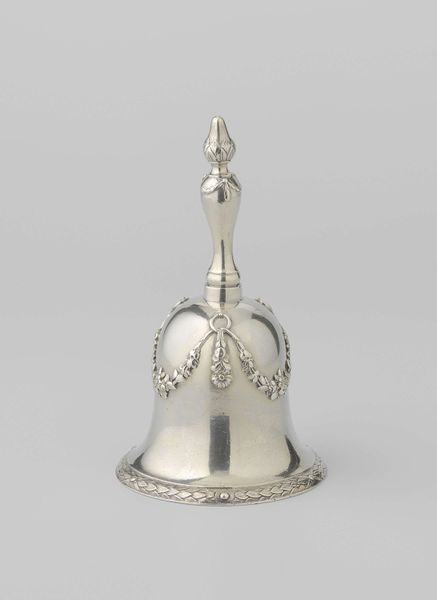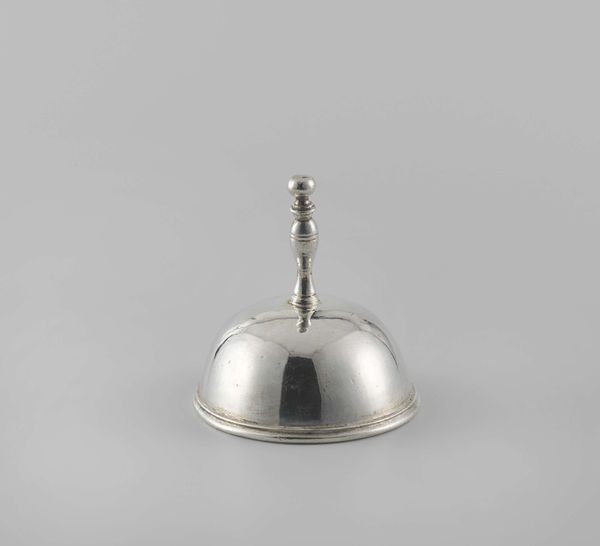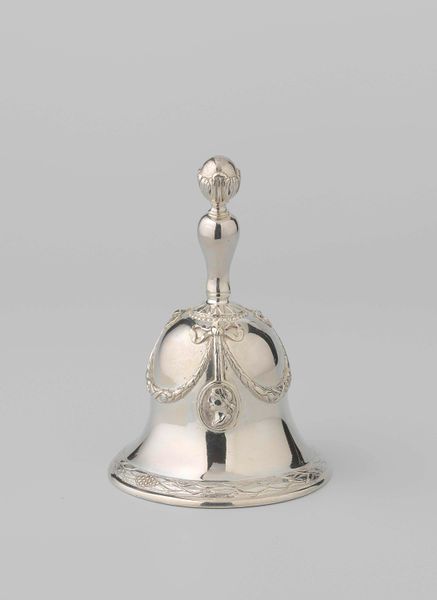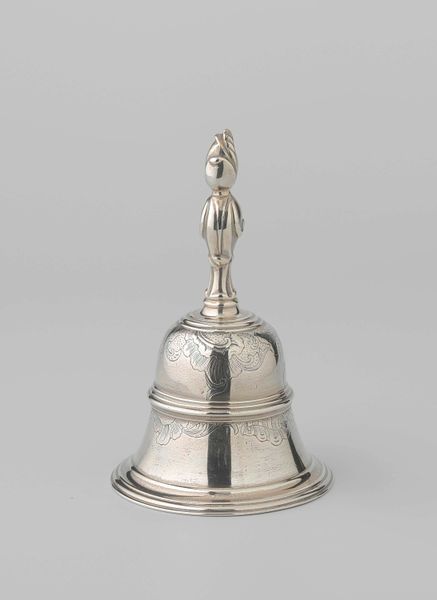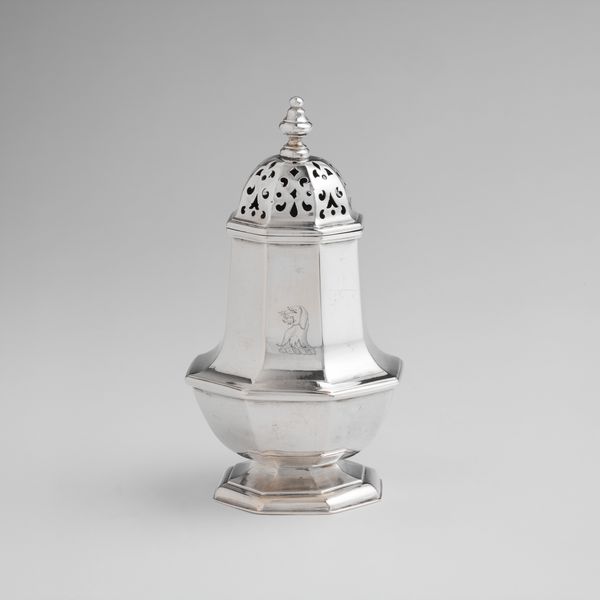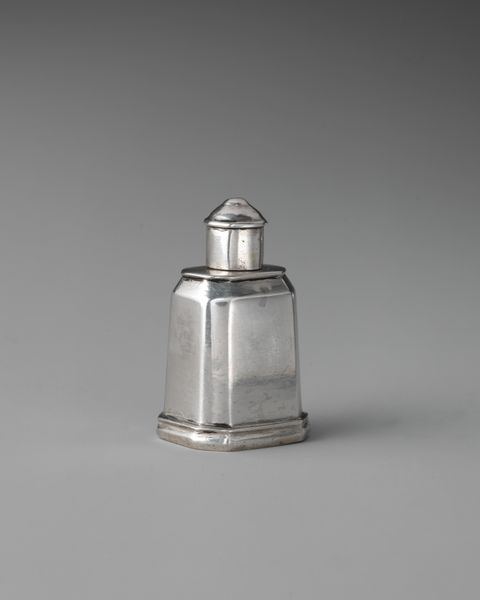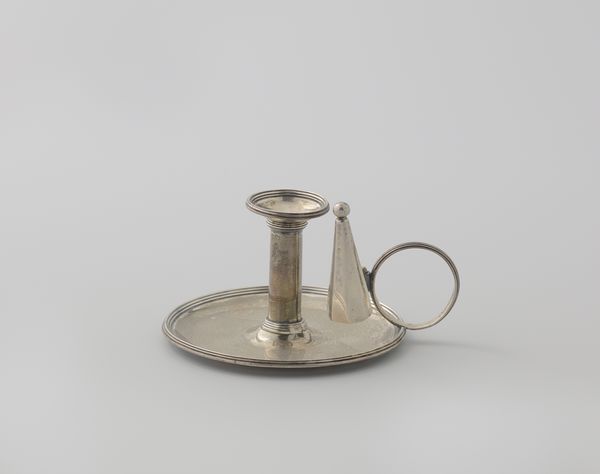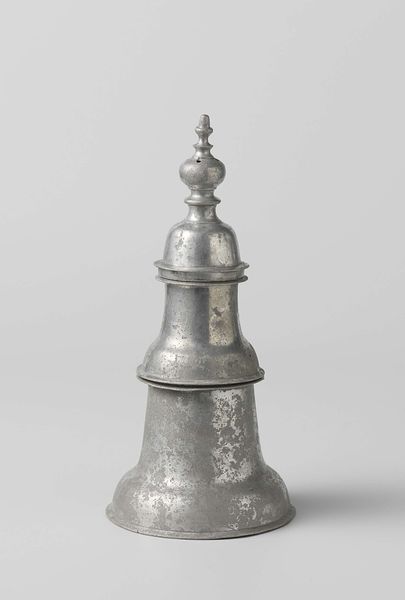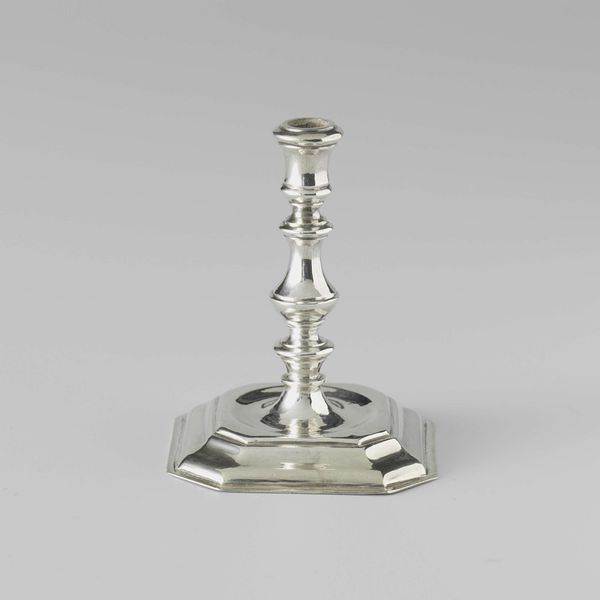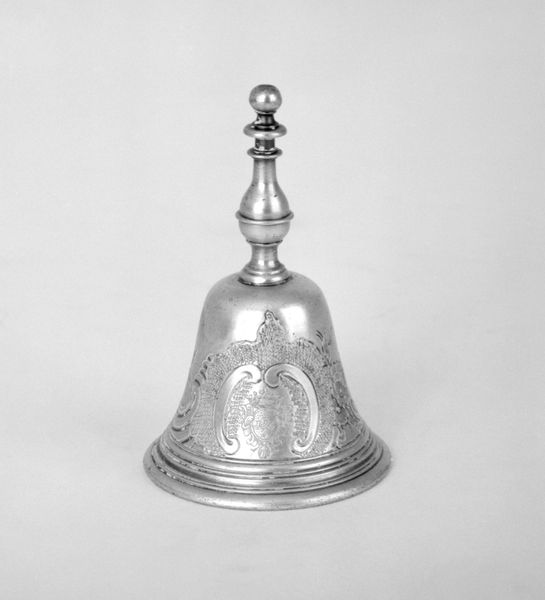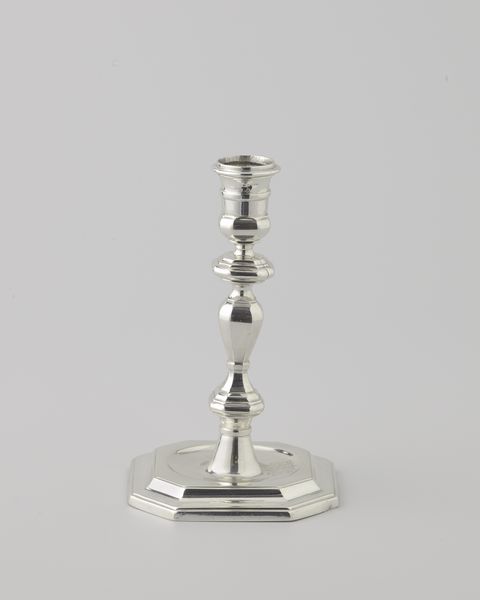
metal, sculpture
#
baroque
#
metal
#
sculpture
#
decorative-art
Dimensions: height 5.7 cm, diameter 4 cm
Copyright: Rijks Museum: Open Domain
Editor: Here we have a handbell, crafted in 1758 by Johannes van Somerwil I. It's a striking piece, even in its simplicity, wrought from gleaming metal. There is an austere beauty to it. How does this seemingly functional object resonate with the social and historical context of its time? Curator: Well, consider the decorative arts within the Baroque period. It wasn't merely about aesthetics. Craft objects such as this often signified wealth, status, or piety. Who owned this bell? Was it used for religious purposes, domestic service, or some other ritualistic function? Those would be telling questions. The sheen suggests precious metals, often tightly controlled through sumptuary laws, which regulated who could display wealth through material objects. What stories of power do you think such an object might tell? Editor: So, beyond its surface appeal, its value could’ve been linked to specific social groups. Maybe it could denote one’s proximity to privilege. Is it like a symbol? Curator: Exactly. Think about the silversmithing trade itself, regulated by guilds that held significant political influence in Dutch society. Commissioning a piece like this reinforced those structures, as did passing the artifact down through generations of one powerful family, and the imagery within decorative works told deliberate tales, conveying messages about hierarchy, class aspirations, and so on. It becomes less about its mere use and more about its role within that particular social play. Does the Baroque style influence this political play, perhaps making this kind of object and role unavoidable? Editor: That is fascinating. I didn't realize that something seemingly so basic could be such a potent social marker! Curator: The intersection of art and power can reveal very complicated and revealing historical facts, and in thinking about how socio-political history and craft history merge, it provides more points of inquiry, such as the provenance, and illuminates the object in profound ways. Editor: I'll definitely keep a sharper eye on material culture moving forward! Thanks for that.
Comments
No comments
Be the first to comment and join the conversation on the ultimate creative platform.
